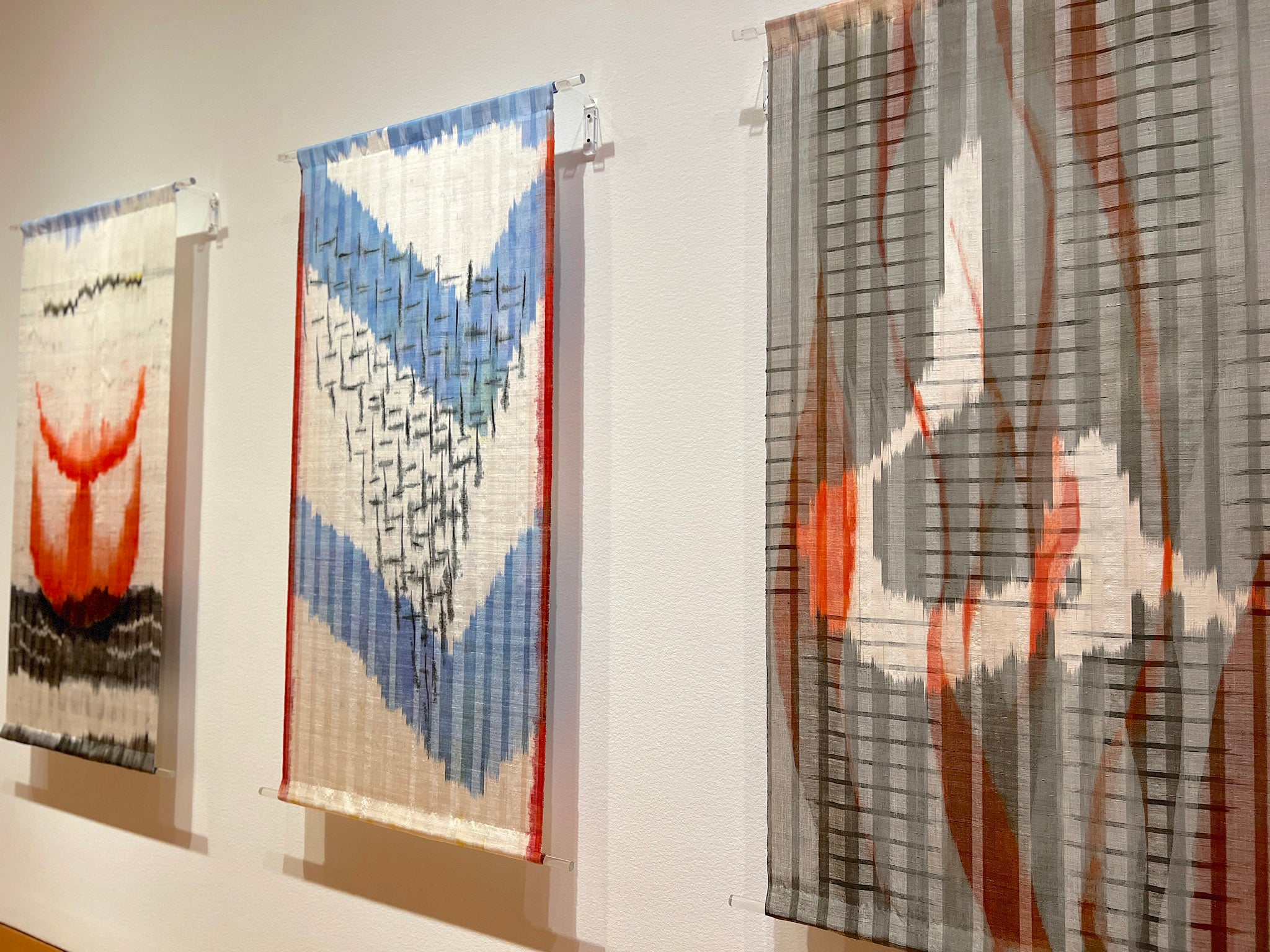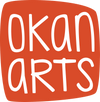By Patricia Belyea
SEATTLE WA Unwrapping precious textiles from acid-free paper and installing them as a headliner museum show is alchemy worthy of the greatest curators.
The two Pams — Pam McClusky and Pamela Cobb — at the Seattle Art Museum produced a powerful installation that raises textile treasures to new heights with IKAT: A World of Compelling Cloth.

What is ikat? It’s the craziest way to make a pattern in woven fabric! After precise planning, threads are pre-dyed so the patterns are expressed during the weaving process. Warp threads, weft threads, or both threads can be dyed to create the distinctive blurred edges found in ikat-woven textiles.

Beyond the skill and brilliance required to make the complex configuration, the Ricketts grew the indigo from seed, harvested the plants, and hot composted the leaves to extract the blue dye.

Next up is a wonderful display of ikat from Japan.
Ikat-woven cotton, known as kasuri, is shown as futon covers and kimono.


Kimono made of ikat-woven silk include the oldest Japanese textile in the exhibit. Woven in Kyoto around 1770, the Noh theater robe combines alternating blocks of warp-ikat plaid and weft brocade.


As you move deeper into the world of traditional ikat, you are swept away to the four corners of the globe—Africa, India, Southeast Asia, Uzbekistan, Indonesia, Europe, and the Americas.





Changing directions and traveling forward through time, there are also presentations of contemporary ikat.
Polly Barton’s knotted, dyed, painted, and woven textiles shine with a freedom of expression that transcends the discipline required to make her gestural works.

Is this cheating? Modern textile manufacturers replicate ikat patterns by just printing them. So much for the 30 steps required to weave an authentic ikat textile!

In structuring the whole experience, the Pams broke a conventional rule in museum exhibit design. Didactic panels are typically installed at least 40” from the floor. For IKAT, the didactics are at ankle height on a clever system of wooden grates.

There is much to see at SAM—from glances across whole galleries to up-close inspections of the threads and patterns!

Show Catalog
Most of the textiles in the exhibit are from The David and Marita Paly Collection—either as gifts to the Museum or borrowed from the Palys.
The Historic Textile Research Foundation, in cooperation with Hali Publications of London, published Global Ikat: Roots and Routes of a Textile Technique for the show. The comprehensive 239-page hardcover book includes essays by textile experts and gorgeous color photos with in-depth captions of The Collection.



The show closes on Monday, May 29. (For those on the East Coast, its next destination is The Textile Museum in DC.) I hope you can make it!

 ABOUT US: Okan Arts, a petite family business, is co-owned by mother-daughter duo Patricia Belyea and Victoria Stone. Patricia and Victoria sell Japanese textiles online, host creative quilting experiences, and lead quilting & textile tours to Japan.
ABOUT US: Okan Arts, a petite family business, is co-owned by mother-daughter duo Patricia Belyea and Victoria Stone. Patricia and Victoria sell Japanese textiles online, host creative quilting experiences, and lead quilting & textile tours to Japan.
FOLLOW OKAN ARTS ON INSTAGRAM @okanarts







